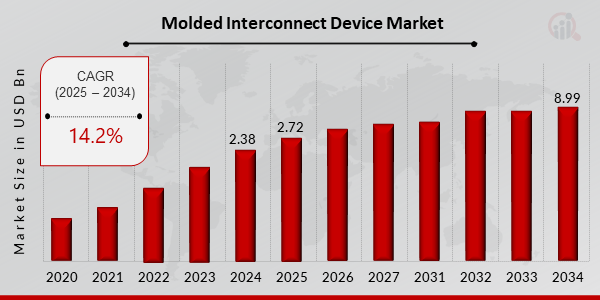Cryptocurrency continues to evolve, with innovation driving new trends in digital asset generation and investment. One of the most critical foundations behind this ecosystem is mining. As interest in Bitcoin and other cryptos expands, the crypto mining machine has become central to both the economy and the technology of blockchain.
This article explores how mining technology intersects with Bitcoin’s future, examining the role of mining equipment, energy efficiency, market trends, and how all of this ties into a forward-looking view on the bitcoin price prediction 2030.
The Role of the Crypto Mining Machine in the Blockchain Ecosystem
The second layer of any conversation around crypto begins with understanding the backbone of mining. At its core, a crypto mining machine solves complex mathematical puzzles to validate transactions on a blockchain. These machines are not just computers; they are purpose-built rigs designed for high computational performance.
The faster a machine solves problems, the more mining rewards it earns. That reward is what powers the decentralized finance world. As machines evolve from CPUs to GPUs and now to ASICs, mining becomes more efficient and profitable—if strategically managed.
Evolution and Efficiency in Mining Technology
Mining was once the domain of everyday computers. Now, ASICs (application-specific integrated circuits) dominate the scene. This shift means a new standard for the crypto mining machine—focused on performance, lower energy consumption, and higher hash rates.
With global attention turning toward sustainability, mining operations are increasingly adopting green solutions. Solar-powered mining farms and liquid cooling systems are examples of how the industry adapts. Efficiency matters not just for performance but for profitability, especially as the mining reward halves roughly every four years.
Key Features of Today’s Mining Machines
-
High Hash Rate: Determines how fast the machine can mine blocks
-
Energy Efficiency: Lower power consumption equals higher profits
-
Durability and Heat Management: Prolonged operation with reduced risk of hardware failure
-
Ease of Integration: Plug-and-play setups with simplified software interfaces
Market Synergy: How Mining Influences Bitcoin Trends
Bitcoin’s price often influences mining profitability, but the relationship also works in reverse. When a large number of miners operate at scale, the network becomes more secure and trustworthy, creating a positive feedback loop for market confidence.
The performance of a crypto mining machine is therefore a reflection of the market’s health. As mining becomes more competitive, only the most optimized setups can thrive. In turn, market demand drives the development of better machines.
This synergy has implications far beyond tech. It defines mining as both an economic activity and a strategic investment. Miners must consider timing, electricity costs, difficulty levels, and reward halving cycles when entering the market.
Challenges in the Mining Landscape
No advancement comes without hurdles. While technology pushes forward, the industry still faces several challenges:
-
Regulatory Pressure: Governments around the world are drafting new rules that could limit mining in some regions
-
Energy Costs: Electricity prices continue to rise, affecting ROI
-
Environmental Concerns: Calls for greener mining practices are reshaping infrastructure
-
Hardware Lifespan: Even the best crypto mining machine has a finite operating period before obsolescence
Yet with every challenge, comes an opportunity. New technologies, combined with decentralization, are prompting innovations like mobile mining rigs, community mining pools, and even AI-driven performance optimizations.
Global Trends Impacting the Mining Sector
1. Shift to Renewable Mining
Miners are gradually shifting to hydro, wind, and solar energy sources to cut costs and align with ESG standards. Countries with abundant renewable energy are becoming new hubs for mining operations.
2. Decentralization of Mining
The days of massive centralized mining farms may be fading. The new wave favors distributed networks using compact crypto mining machine units that can run in homes or small offices.
3. Integration with AI and Automation
AI is beginning to automate functions such as power management, temperature control, and hash optimization. These features improve both performance and life expectancy.
4. Market-Driven Machine Upgrades
Just like any tech industry, demand drives development. As Bitcoin gains mainstream traction, the race to produce faster, more efficient machines heats up.
Mining as a Passive Income Strategy
For tech enthusiasts and passive income seekers, running a crypto mining machine at home or via a cloud-based platform offers new financial possibilities. The initial setup cost can be offset by long-term mining rewards especially if electricity costs are managed well.
There are also staking options, tokenized mining shares, and decentralized mining pools that lower the entry barrier. While it may not make everyone rich overnight, mining remains a foundational path toward consistent crypto earnings.
Considerations for Beginners
-
Start small and scale gradually
-
Always evaluate your break-even point
-
Join reputable mining pools for better reward distribution
-
Keep your machines updated for firmware and security
How the Halving Cycle Impacts Mining
Bitcoin operates on a halving mechanism, where rewards are reduced by half approximately every four years. This impacts profitability directly and creates natural market cycles.
When rewards shrink, only the most efficient crypto mining machine setups remain viable. It forces the industry to evolve, pushing for better performance and lower energy consumption. The next halving event is expected to tighten the market even more, favoring those who prepare in advance.
Institutional Interest and the Future of Mining
Larger financial players are now looking into mining. From hedge funds to private equity groups, there’s growing interest in owning and operating mining assets. This adds liquidity, but also competition, driving technological upgrades and infrastructure improvements.
In this environment, owning a crypto mining machine is no longer just for techies. It’s an investment decision backed by data, performance metrics, and future market predictions.
As this industry matures, home miners and professionals alike will need to stay updated, agile, and informed.
Bitcoin Price Outlook and What It Means for Miners
Mining profitability and price speculation often go hand in hand. When prices soar, miners reap higher rewards. But what does the future hold? Experts anticipate steady growth over the next five years due to scarcity, adoption, and macroeconomic shifts.
As we look ahead, the bitcoin price prediction 2030 is becoming a core topic of interest. Some forecasts suggest Bitcoin could surpass six figures due to limited supply and rising institutional demand. Others are more conservative, pointing to regulation and volatility as factors that may curb growth.
Regardless of the exact number, the consensus is that Bitcoin will remain a valuable digital asset. This makes mining machines even more relevant as they become the tools of digital gold extraction in a tightening market.
Conclusion
The journey of the crypto mining machine is far from over. It’s a story of innovation, economics, and resilience. From home miners to enterprise operations, mining remains a key pillar in the blockchain ecosystem.
The blend of better machines, smarter software, and strategic deployment is fueling the next era of crypto generation. With the bitcoin price prediction 2030 reflecting both hope and competition, there’s no better time to reassess how mining fits into the broader digital asset strategy.






